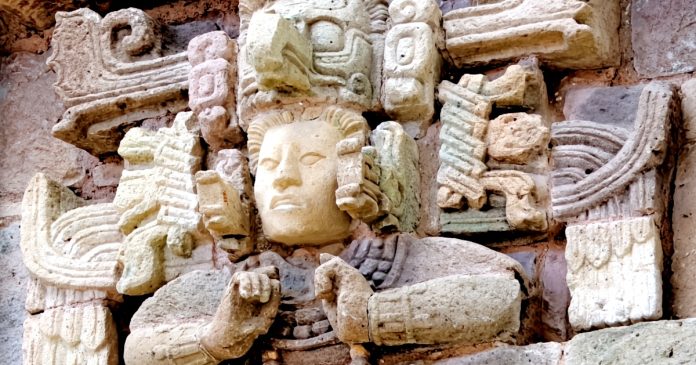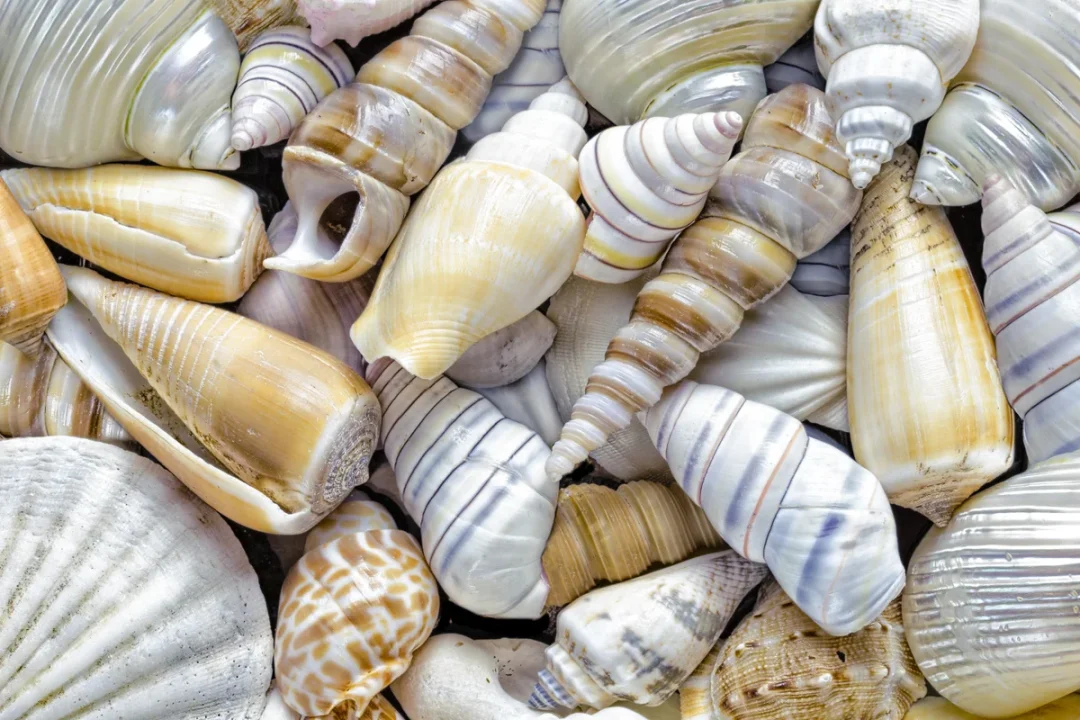Ancient Mayan masonry science of Copan, Honduras, reveal a remarkable blend of intelligence and purpose. Evidence studied there reveal a durable lime-based plaster. From a civilization that thrived between 1100 BCE and 850 CE. Researchers, have uncovered how Mayan masons crafted some of the most resilient building materials known, using a biomimetic approach with plant extracts. This discovery, detailed in a 2023 Science Advances paper, showcases the sophisticated techniques employed at the Copan archaeological site, a World Heritage Site near the Guatemala border. The findings not only honor the ingenuity of the Maya but also challenge modern misconceptions, including the misappropriated “geopolymer” theory, by demonstrating that science openly celebrates such ancient innovations rather than concealing them.
The Historical Context and Location

Copan, rediscovered in the 19th century following early Spanish accounts from 1576 and popularized by the 1841 expedition of Stephens and Catherwood, stands as a testament to Mayan architectural prowess. The site, part of the “Copan Main Group” or Acropolis, includes iconic structures like the Hieroglyphic Stairway and the substructure Rosalila. These areas yielded plaster samples dating from 540 to 850 CE, collected from walls, floors, and decorative stucco masks. The Maya independently developed lime pyrotechnology, calcining limestone to produce quicklime, which they slaked into calcium hydroxide and carbonated into calcium carbonate cement. This process, initiated around 1100 BCE, created plasters that have withstood over 1,200 years of tropical humidity and heat, defying typical degradation like cracking or scaling.
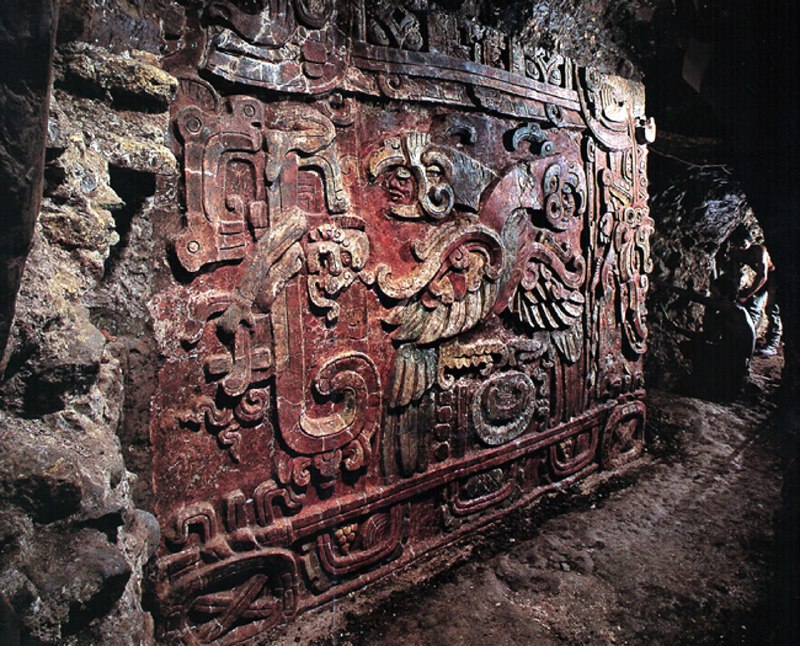
The researchers analyzed six samples, including coarse plasters and fine, pinkish plasters from Rosalila. These materials, primarily composed of up to 95% calcite, incorporated local volcanic tuff as aggregate in some cases. However, the durability stemmed not from hydraulic reactions but from organic additives, a technique rooted in Mayan tradition and supported by 16th-century chronicler Bishop Diego de Landa’s observations of bark-derived water in plaster preparation.
The Scientific Breakthrough
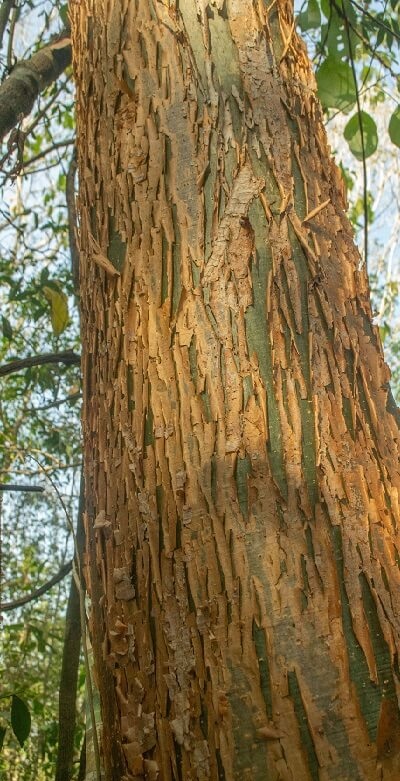
The Mayan masonry science hinges on the use of polysaccharide-rich extracts from Chukum (Havardia albicans) and Jiote (Bursera simaruba) tree barks, collected near Copan in 2018. The study replicated ancient plasters by adding these extracts to slaked lime, revealing a biomimetic process mirroring natural calcium carbonate biominerals like seashells. Advanced analyses, including Fourier transform infrared spectroscopy (FTIR) and transmission electron microscopy (TEM), detected carbohydrates within the calcite structure, forming nano-to-mesoscale features that enhanced toughness and weathering resistance.
Methods of Study
Using high-resolution X-ray diffraction (HRXRD), researchers discovered that tiny organic molecules had become trapped within the crystal structure, creating internal strain; similar to what happens in naturally formed materials like seashells. These organic compounds, whether broken down into smaller pieces or preserved as larger molecules, influenced how the crystals grew during the carbonation process. When scientists recreated these ancient plasters under controlled conditions for up to two months, they found that the structure closely matched historical samples, especially in texture and flexibility.
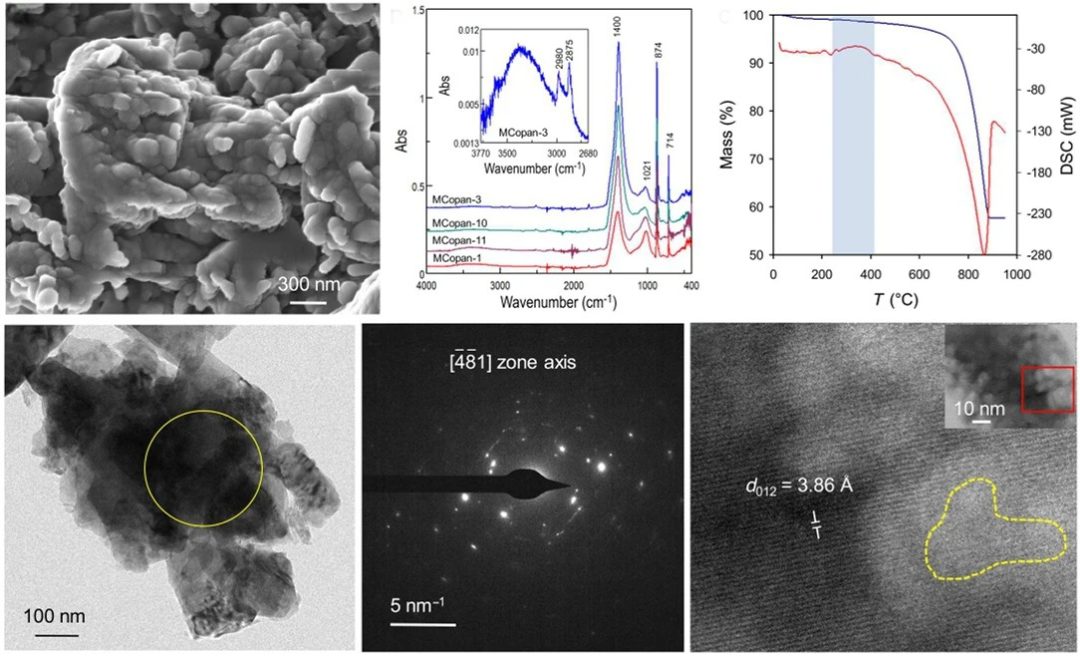
Authors, some rights reserved; exclusive licensee American Association for the Advancement
of Science. No claim to original U.S. Government Works. Distributed under a Creative
Commons Attribution Non Commercial License 4.0 (CC BY-NC).
Study Results
High-powered electron microscopy revealed a fine, nanogranular structure, while indentation tests showed that the material could deform under pressure rather than crack; suggesting it was intentionally designed to absorb stress and remain durable. This blend of organic chemistry and material science reveal how ancient builders engineered resilient plasters using methods that modern science is only beginning to fully appreciate.
Enhancing Durability Through Purposeful Design
The purposeful integration of organics elevated Mayan masonry science beyond mere construction. The extracts delayed slaking, reduced drying cracks, and created a compact structure. However, the research highlights a deeper mechanism. The organic compounds bonded to and became trapped inside the calcite crystals, reinforcing them in a way similar to how natural minerals strengthen biological structures like shells and bones. This layered structure, examined with atomic force microscopy (AFM), was found to resist breaking down in water, fortifying its durability. Which explains the plasters’ longevity in Copan’s harsh environment.
Dissolution rate tests demonstrated that plasters with organics, both ancient and replicated, resisted water breakdown better than additive-free counterparts. Experiments on Iceland spar crystals further illustrated how Chukum and Jiote extracts influenced the way the crystals grew, smoothing out surface features and preventing pits from forming. This highlights how these organic additives were intentionally used to improve the material’s long-term stability. This intelligence in material selection and processing reflects a profound understanding of natural chemistry, likely honed over centuries of experimentation.
Dispelling Misinformation with Open Science
Unlike claims of a hidden “geopolymer” solutions to ancient stone masonry, often misappropriated to explain feats like the pyramids, Mayan masonry science provides us transparent, evidence-based data. The geopolymer theory suggests a secret cement technology, but no credible evidence supports its use by the Maya or other ancient cultures. Instead, this study, published openly under a Creative Commons license, showcases how science embraces such discoveries. The researchers’ reverse engineering approach aims to inspire sustainable modern construction and heritage conservation. Proving that ancient techniques can inform contemporary practices without resorting to unfounded conspiracies.
The study’s methodology, involving detailed mineralogical and mechanical analyses, contrasts with the speculative nature of geopolymer advocates. By replicating Mayan techniques and validating them with cutting-edge tools, the team dismantles misinformation while honoring the Maya’s legacy. This openness encourages further exploration, potentially leading to eco-friendly plasters that rival the durability of those at Copan.
Legacy and Future Implications
The intelligence behind Mayan masonry science extends beyond Copan, suggesting other ancient civilizations may have similarly exploited biomimetic routes. The study’s findings, rooted in a specific timeframe and location, offer a model for understanding how natural additives can transform basic materials into enduring structures. The ongoing relevance of this research highlights the Maya’s contribution to material science.
Museums like the Copan Museum of Sculptures preserve these artifacts, while scientific inquiry continues to unlock their secrets. The purposeful design of these plasters, blending tradition with innovation, stands as a beacon of human ingenuity, challenging us to rethink how we build today while respecting the past.
This exploration of Mayan masonry science not only celebrates a remarkable historical achievement but also paves the way for future advancements, all while rejecting the shadows of misinformation with clear, reproducible evidence.
Love uncovering the secrets of the Maya? Check out Secret Mayan Sign Language: Hidden in Plain Sight

